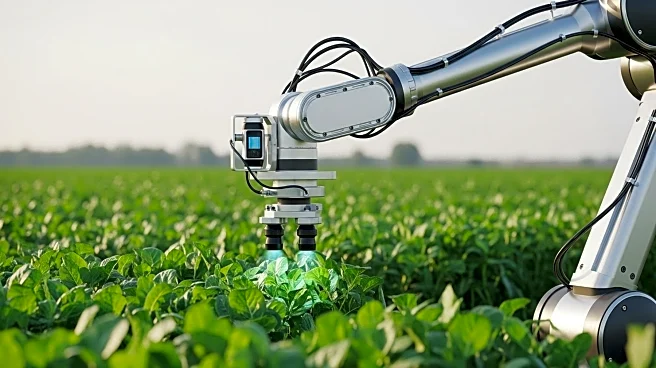What is the story about?
What's Happening?
H2L Robotics is set to deploy its PotatoSelector300, an autonomous robot designed to identify and mark diseased potato plants. Building on technology used in tulip disease scouting, the PotatoSelector300 uses smart software to detect diseases like Y-virus leaf roll and Erwinia in specific potato varieties. The robot operates autonomously, marking diseased plants with chalk paint for manual removal. This innovation is part of a collaboration with WUR and Kverneland under the Agros II project, aiming to enhance disease detection in agriculture.
Why It's Important?
The PotatoSelector300 represents a significant advancement in agricultural technology, offering a precise and efficient method for disease detection. This could lead to improved crop yields and reduced losses due to disease, benefiting farmers economically. The robot's autonomous operation reduces labor costs and increases efficiency, aligning with the industry's move towards automation. As disease detection becomes more accurate, it could enhance food security and sustainability in agriculture.
What's Next?
H2L Robotics plans to build and deploy eight units of the PotatoSelector300 next year, with ongoing development of algorithms for additional potato varieties. The company will provide technical support and updates, with a focus on expanding the robot's capabilities. This deployment will test the robot's effectiveness in real-world agricultural settings, potentially leading to broader adoption and further technological advancements.
AI Generated Content
Do you find this article useful?
















